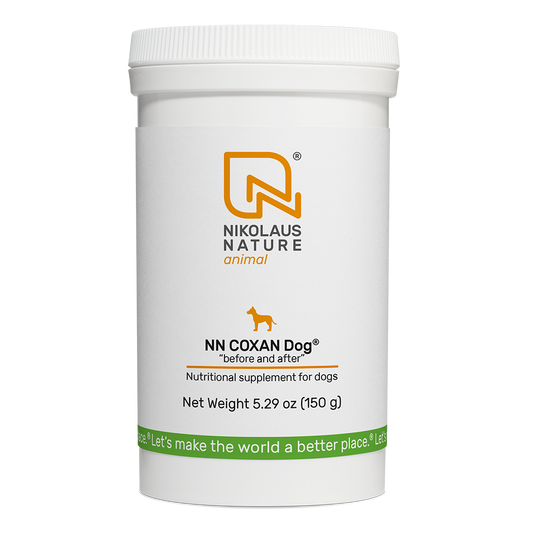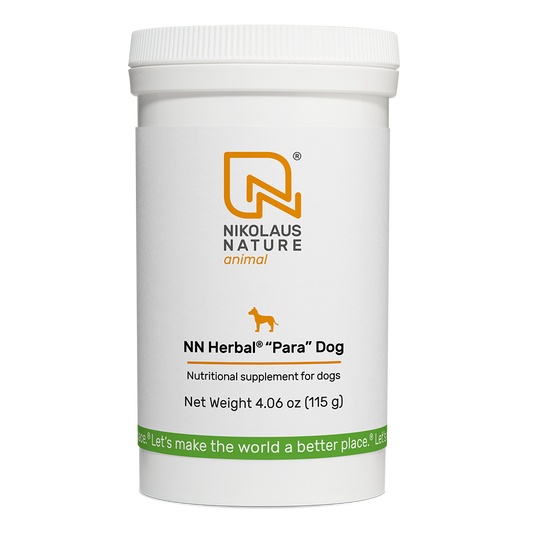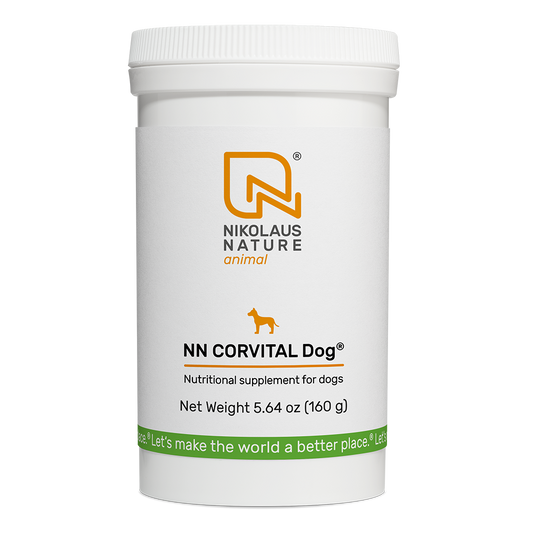Yeast Infections in Dogs
If your dog has suddenly developed an uncontrollable itch, they might be dealing with a yeast infection.
Yeast infections can be quite painful for our furry friends. But with the proper medication and care, you can treat the infection, ease your dog’s discomfort, and quickly nurse them back to health.
Read on to learn what causes yeast infections, what you can do to treat one at home, and how to prevent future outbreaks.

What Are Yeast Infections in Dogs?
Yeast infections occur when the yeast normally found in tiny quantities on your dog’s skin grows out of control.
Yeast is a type of fungus. The most common yeast found on a dog's skin is Malassezia pachydermatis , but there are other strains, too.
Usually, your dog’s immune system keeps the yeast in check, preventing it from growing beyond a healthy limit.
But when the yeast grows uncontrolled – either due to a weakened immune system or very favorable growing conditions – it causes an infection.
The excessive yeast causes itching and inflammation of the skin. The itching encourages your dog to scratch and lick the affected area in an attempt to ease the discomfort, but this only worsens the problem, causing more damage to the skin.
Yeast infections are fairly common in dogs. All types of dogs can develop a yeast infection, but some have it worse than others. Flabby skin and large ears are the most notable risk factors.
Types of Yeast Infections in Dogs
Yeast infections often develop on the skin, but they can also affect the ears and paws. Each type shows different symptoms and requires different approaches to treatment, so you need to be able to tell them apart.
-
Skin.
Infections on the skin typically occur in warm and moist areas, as that’s where yeast thrives. The underbelly, armpits, groin, and skin folds are all common sites of infection. If your dog is scratching or licking their skin excessively and shows signs of discomfort, they’re likely dealing with a skin yeast infection. If left untreated, the affected skin will lose hair and turn brown from the excessive licking.
-
Ears.
Ear infections are more prevalent among dogs with large, flappy ears as they tend to have little air circulation in the ear canal. The most obvious symptoms are a waxy, brown discharge from the ear and a foul smell. Your dog will shake their head frequently and scratch the area around the ear to relieve discomfort.
-
Paws.
Yeast infections can also develop on the paws. This often occurs following a pad injury or allergic reaction to something in the environment. Dogs lick their paws frequently for all sorts of reasons, and it usually isn’t a cause for concern. However, excessive, deliberate licking can indicate a paw infection.
How Dangerous Is a Skin Yeast Infection?
A skin yeast infection causes itching and inflammation that develops into more serious pain and injury over time.
The weakened skin barrier from all the licking and scratching makes it easier for other pathogens to attack. It’s not unusual for a yeast infection to be followed up by a more serious bacterial infection.
Now, yeast infections aren’t life-threatening. With the right medication, they can be treated over the course of a few weeks. But it’s crucial you get your furry friend checked by a vet as soon as possible. The infection will only continue to worsen if left unchecked.
The thing about yeast infections is that they usually indicate that your furry friend has a more serious underlying problem. Something could be diverting the immune system's attention, allowing the yeast to grow out of control.
It’s best to get their health checked by a professional so that they can identify any hidden problems.
Signs and Symptoms of Yeast Infections
For skin infections, the usual symptoms are:
-
Redness and inflammation, especially in areas with skin folds.
-
Itchy, irritated skin leading to excessive scratching or licking
-
A foul, musty smell.
-
A flaky, dry skin surface.
-
Changes in skin color and hyperpigmentation.
-
Hair loss around affected areas.
For ear infections:
-
Dark, waxy, or yellowish discharge.
-
A strong, musty odor from the ears.
-
Redness and swelling of the ear canal.
-
Shaking the head or tilting it to one side.
-
Scratching or pawing at the affected ear.
-
Visible discomfort or pain when the ears are touched.
For an infection of the paws:
-
Constant licking or chewing of the paws.
-
Redness and inflammation between the toes.
-
Discoloration of the fur around the paws (often brown or reddish from licking).
-
Cracked or thickened skin on the pads.

How Do Dogs Get Yeast Infections?
Dogs don’t “catch” a yeast infection. As mentioned earlier, it’s natural for some yeast to live on the skin. The yeast can grow excessively and develop into an infection for several reasons:
-
Humidity and Moisture: Yeast thrives in moist conditions. If your dog swims or bathes a lot and you don’t dry them off properly afterward, or if you just live in a warm, humid area, it’s easier for yeast to proliferate on the skin.
-
Immune System Disorders: A healthy immune system is what keeps yeast and other opportunistic infections at bay. Dogs with weakened or compromised immune systems due to diseases or immunosuppressive medications are at a higher risk of yeast infections.
-
Allergies: Allergic reactions to food, allergens in the environment, or flea bites can cause skin irritation.
-
Antibiotics: Antibiotics are important for battling bacterial infections, but they can also inadvertently disrupt the skin and gut's microbial balance by killing off “good” bacteria. Good bacteria keep yeast levels in check. So, with them gone, yeast has an easier time growing.
-
Hormonal Imbalances: Certain disorders and hormonal issues like Hypothyroidism impact the skin's health and immunity.
How To Treat Yeast Infection In Dogs
Your best option is to get your dog checked up at the vet. Your vet will ask you about your dog’s current symptoms and previous medical history. They will likely do a full body exam to assess the problem accurately and run some tests to identify the pathogen.
A piece of clear tape or a cotton swab is most commonly used to obtain a sample from the affected skin, which is then viewed under a microscope.
Treatments for yeast infections depend on severity, but topically applied creams and ointments paired with antifungal shampoos are typically the first line of action.
Your dog’s vet will likely suggest topicals that contain ingredients such as Ketoconazole and Fluconazole to kill off the yeast. The topicals also have compounds to soothe your dog’s inflamed skin, relieve discomfort, and speed up the healing process.
If the infection is severe, widespread, or in a hard-to-reach area like the inner ear, your vet might prescribe an oral antifungal medicine in addition to the topicals.
Yeast infections are often accompanied by bacterial infections, so your vet might recommend an antibiotic as well.
Consistent application of the prescribed medicines, along with regular baths, is enough to treat most yeast infections. You can notice improvements in as little as a week.
Most yeast infections are wiped out entirely within a few weeks of starting treatment, but the skin can take a while to heal up. Even if symptoms subside earlier than expected, you should continue with the treatment for as long as your vet has prescribed it to prevent the infection from returning.
Dog Yeast Infection Home Remedies
If you suspect your dog has a yeast infection, you should immediately head to the vet.
It may feel like some of the symptoms are quite obvious, but you can’t correctly diagnose a yeast infection with an untrained eye and without testing equipment. Your dog might be suffering from an allergic reaction or a bacterial infection instead.
That said, once your vet confirms you’re dealing with a yeast infection, there are a few home remedies you can try.
-
Frequent baths with an antifungal shampoo:
You can find plenty of over-the-counter antifungal shampoos for dogs in-store and online. They aren’t as effective as prescription-grade shampoos, but they can still help. After bathing your dog, make sure to dry them off thoroughly, especially the yeast- infected areas.
-
Vinegar:
Vinegar is proven to have antifungal properties. It’s naturally acidic and kills yeast by lowering the pH levels on the skin.
Use either white vinegar or apple cider vinegar, but don’t apply it at full strength—it’ll just cause more irritation. Dilute it by mixing it with an equal amount of water. Spray the solution onto the affected areas and rinse thoroughly. Take care to avoid your pup’s eyes, ears, and mouth.
-
Coconut oil:
Coconut oil has some antifungal properties. It relieves discomfort, promotes skin healing, and is safe when applied topically.
-
Aloe vera:
Although aloe vera isn’t very good at killing yeast, it’s a great anti-inflammatory that relieves itching, strengthens the skin barrier, and promotes healing. Apply a small amount of pure aloe vera to affected areas. Avoid brands with additives, as they can lead to further irritation and harm if ingested.
-
Probiotics:
Probiotics contain “good” bacteria that support a healthy gut flora and a strong immune system. They help fight off yeast infections from the inside out.
Consult with your vet before starting one of these remedies, and don’t use them as substitutes for proper antifungal medicines.
What To Do If Yeast Infections Are Recurring
If your dog keeps developing yeast infections, there’s likely an underlying cause you haven’t been able to identify or address. Work with your vet to try to understand what it is.
-
Does your dog bathe frequently?
-
Does your dog go for frequent swims? Water and debris can get trapped in the ears, leading to infection.
-
Is your dog on medication? Immunosuppressants make it harder for the immune system to stave off infections.
-
Does your dog have a history of allergies or skin sensitivities? Unfortunately, some dogs are simply more sensitive to yeast infections and require extra preventative care.
-
What type of diet does your dog follow? A diet high in sugars and carbs can fuel yeast growth.
-
Are there any areas in your dog's living environment that are particularly humid or damp? Eliminating these areas can help prevent infections.
-
Does your dog wear clothing or accessories (like harnesses) for extended periods? Items that trap moisture against the skin are problematic. You should swap them out for alternatives that allow better air circulation.
Prevention of Yeast Infections in Dogs
The damage done by yeast infections can take months to heal, so prevention is better than cure.
-
Practice proper hygiene and grooming: Regularly bathe and groom your dog, focusing on the ears, paws, and skin folds. Remember to dry your dog thoroughly.
-
Feed your dog a balanced diet: Your dog’s diet should consist of foods low in sugars but high in proteins, fats, and fibers. This not only discourages yeast growth but also promotes overall health and well-being. Consider using supplements if you feel your dog’s diet is lacking. Studies show that Omega 3 supplements can help with skin inflammation.
-
Avoid Allergens: Identify potential allergens in your dog’s environment and try to minimize exposure.
-
Regular Veterinary Check-ups: Schedule annual or bi-annual veterinary visits to monitor your dog's overall health. Regular check-ups will help catch illnesses early on when they’re much easier to treat.
Remember that whatever the cause of the yeast infection, your dog will better handle the condition if it’s in good overall health and has a robust immune system. Improving your dog's diet with better food and supplements is the first step to improving their long-term health and their ability to deal with common ailments like yeast infections.
FAQ about Yeast Infections in Dogs
What food causes yeast infections in dogs?
Foods high in sugars and carbohydrates can contribute to yeast infections in dogs by providing the yeast with the fuel it needs to grow. Sweetened foods are a major culprit.
What happens if dog yeast infections go untreated?
A yeast infection usually won’t resolve without treatment. Untreated yeast infections worsen over time and can lead to severe skin irritation and an increased risk of secondary bacterial infections. The constant itchiness and discomfort can even cause increased anxiety and aggression in your canine friend.
What should I feed my dog when they have a yeast infection?
Opt for a diet low in starches and sugars. Focus instead on high-quality proteins, healthy fats, and fiber-rich foods. Adding probiotics and omega-3 supplements can also help by supporting skin health and the immune system.
Are yeast infections in dogs contagious?
Yeast infections in dogs are not contagious to humans or other pets. It’s normal for all dogs to have some yeast on their skin. It’s only when the immune system is weakened that the yeast overgrows. So, a dog with a healthy immune system won’t catch a yeast infection from other dogs.
Sources:
- Canine Malassezia dermatitis - PMC (nih.gov),” https://www.ncbi.nlm.nih.gov/pmc/articles/PMC5603939/
- Hypothyroidism | Cornell University College of Veterinary Medicine,” https://www.vet.cornell.edu/departments/riney-canine-health-center/canine-health- information/hypothyroidism"
- Ketoconazole - an overview | ScienceDirect Topics,” https://www.sciencedirect.com/topics/veterinary-science-and-veterinary- medicine/ketoconazole"
- The power of probiotics | Cornell University College of Veterinary Medicine,” https://www.vet.cornell.edu/departments-centers-and-institutes/riney-canine-health- center/health-info/power-probiotics"
- Antifungal and Antibacterial Activities of Apple Vinegar of Different Cultivars - PMC (nih.gov),” https://www.ncbi.nlm.nih.gov/pmc/articles/PMC8369171/"
- Therapeutic Effect of EPA/DHA Supplementation in Neoplastic and Non-neoplastic Companion Animal Diseases: A Systematic Review - PMC (nih.gov),” https://www.ncbi.nlm.nih.gov/pmc/articles/PMC8193331/






